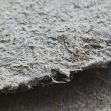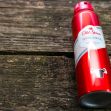Melvin Garner worked for the BNSF Railway Company for over 40 years, during which he was constantly exposed to toxic levels of diesel exhaust and other harmful chemicals. After his death from non-Hodgkin’s lymphoma, a type of blood cancer, his son Gary sued BNSF for his father’s wrongful death. BNSF successfully barred the expert witness-causation evidence Gary sought to include. He appealed and a California appellate court has now ruled that the trial court erred and must enter new orders denying the railroad’s motions.
The Garners will be referred to in this article by their first names to avoid confusion.
Plaintiff/appellant Gary Garner is the real party in interest for his father’s wrongful death case. During his employment with BNSF, his father Melvin worked as a fireman, engineer, and locomotive driver from 1957 to 1999. Melvin was diagnosed with non-Hodgkin’s lymphoma in October 2014 and died the same month. Gary sued the railroad for wrongful death, alleging the company violated the Federal Employers’ Liability Act (FELA).
FELA at 45 U.S.C. § 51 says that every common carrier that operates in interstate commerce “shall be liable in damages to any person suffering injury while he is employed by such carrier or, in case of the death of such employee” to his surviving next of kin. The injury must have been caused by the negligence of the carrier.
In trial before Judges Lynn Poncin and John Nguyen of the Superior Court of San Bernadino County at different times, Gary alleged that his father’s lymphoma was caused by lengthy and repeated exposure to diesel exhaust as well as benzene, rock dust, asbestos fibers, and creosote, a coal tar component.
BNSF denied all of Gary’s allegations and moved for summary judgment, arguing that they did not cause Melvin’s lymphoma and that the statute of limitations barred the wrongful death case. In opposition, Gary submitted declarations from three expert witnesses, including Dr. Andrew Salmon, who had a Ph.D. in Biochemistry from the University of Oxford and 50 years of high-level experience. Salmon and the other doctors all agreed that the substances listed in Gary’s complaint could have caused his fatal condition. The trial judges initially denied BNSF’s motion because they felt causation was a question for the jury. A series of motions in limine from both sides followed. These motions sought to limit or prevent certain evidence from being presented.
One of BNSF’s motions sought to exclude testimony by Salmon who had concluded that Melvin’s exposure “had substantially increased his risk of developing non-Hodgkin’s lymphoma” and that his work “was more likely than not a cause” of the lymphoma.” BNSF argued Salmon had no evidence that linked exposure to diesel exhaust to Melvin’s lymphoma, and argued he had just relied on similarities to the link between the exhaust and lung cancer. BNSF argued that since Salmon “could not limit the excess cancer risk to risk to non-Hodgkin’s lymphoma, his opinions are not specific to Melvin and are thus pure speculation.”
Gary countered that it was proper to base his “risk calculations” on a method that looked at an organ site “rather than focusing on the organ site at issue.” He also said other experts shared Salmon’s opinion and that there was “credible literature” that provided a “reasonable basis for his opinion.”
BNSF also argued that the expert testimony of Dr. Robert Gale should be excluded because he could not quantify the dose necessary to cause lymphoma. Gary argued the relevant question was not whether the substances caused the lymphoma, but rather whether they increased the risk of contracting the disease.
After two days of testimony, the trial court excluded Salmon’s opinion, saying, “There is no data, no study, and no testing linking non-Hodgkin’s lymphoma and exposure to diesel exhaust….There is simply too great an analytical gap between the data and the opinion proffered by Dr. Salmon.” With no experts available, the trial court filed judgment in favor of BNSF and dismissed the case. Gary appealed.
In a unanimous 3-0 opinion authored by Justice Martin N. Buchanan in Division One of California’s Fourth District Court of Appeal on January 4, the Court reversed the trial court’s ruling and remanded the case back to San Bernardino County, with directions to vacate its grants of BNSF’s motions in limine that excluded the expert testimony of Salmon, Gale and another doctor, Joseph Landolph.
Buchanan explained that California courts “regularly conclude that if the trial court’s ruling on a motion in limine precludes an entire cause of action, the ruling is subject to independent review on appeal as though the court had granted a motion for nonsuit.” He said, “The rulings deprived (the plaintiff) of essential evidence on causation, resulting in a judgment of dismissal before trial.” He said courts must perform a “gatekeeping function,” when determining whether to exclude expert testimony.
As the gatekeeper, the appellate court then reviewed the trial court’s rejection of Salmon’s opinion, which found “too great an analytical gap between the data” and his opinion. Buchanan provided information on Salmon’s resume, highlighting his “50 years of experience analyzing the carcinogenic effect of toxic exposure in humans, including 31 years working for what is now the OEHHA.” OEHHA is the California Environmental Protection Agency’s Office of Environment Health Hazard Assessment.
Judge Buchanan went on to say the trial court’s ruling was incorrect because “there is no requirement that a causation expert rely on a specific study,” citing precedent that “it is scientifically permissible to reach a conclusion on causation without (epidemiological or animal studies) showing a causal link.” Additionally, Buchanan noted that peer-reviewed evidence is not required in every case.
The judge also pointed out that Salmon had explained that “no studies of the potential link between diesel exhaust and non-Hodgkin’s lymphoma have been conducted” and wrote that “causation is a judgment for epidemiologists and others interpreting the epidemiologic data.” BNSF had little to add. The railroad “presented no evidence calling into question the scientific validity or reliability of any of this reasoning or methodology. It submitted no expert declarations or reports or scientific publications contradicting plaintiffs’ experts’ opinions or suggesting that Dr. Salmon’s use of the overall cancer risk assessment was improper or unreliable.”
The court’s opinion also said that the opinions of doctors Gale and Landolph were valid and that they “were not required to identify the exact dose of diesel exhaust at which point the exposure becomes toxic.” Gary will get a new opportunity to present what Buchanan called “reasonable scientific explanations” for what qualified doctors found to be the cause of Melvin Garner’s fatal disease.






